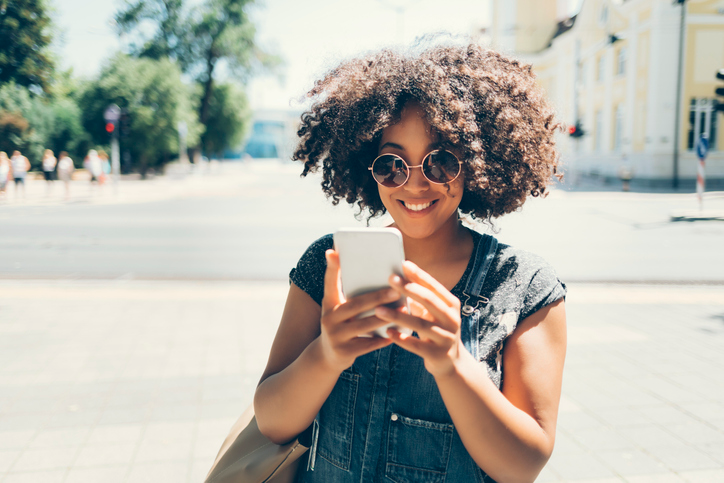What Are the Top 10 Most Annoying Issues on Android and iPhone and How Can I Fix Them?

It's the post you've been waiting for. How to stop the 10 most annoying iPhone and Android annoyances.
When it comes to consumer tech, i.e., smartphones, there's much that can make you crazy. And even though, overall, you love your phone, there are those little iPhone and Android annoyances that have got to go. So, gather your Android phones, Samsung phone, and/or your iPhone. We're going to help you fix those issues right here.
Android
While individual experiences may vary, here are ten common issues that users of Android phones may find annoying, along with suggestions on how to fix them:

1. Battery Drain:
Try the following four things on your Android phone or samsung phone to prevent the battery from draining: 1. Adjust screen brightness and timeout settings. 2. Disable unnecessary background processes and apps. 3. Turn off features like Wi-Fi, Bluetooth, or GPS when not in use. 4.Install a battery-saving app on your Android phone or use the built-in battery life optimization settings.
2. Slow Performance:
Ugh. Slow phones. Try the following four things to speed yours up: 1. Clear app caches and temporary files. 2. Uninstall the bloatware Android phones are notorious for coming with. These extraneous programs slow down your phone and consume storage space and battery life. 3. Restart the phone regularly to clear RAM. 4. Consider a factory reset as a last resort.
3. App Crashes:
Try the following four things: 1. Update the app to the latest version. 2. Clear the app cache and data. 3. Restart the phone. 4. Uninstall and reinstall the problematic app.
On a related note, there are, on occasion, apps you don't use and don't want to see in your home screen box. You can't delete them, but you can hide them. Just tap and hold the app and drag it to the bottom of the screen.
4. Connectivity Issues:
Try the following four things: 1. Restart your phone and the affected device (e.g., Wi-Fi router, Bluetooth accessory). 2. Forget and reconnect to Wi-Fi networks. 3. Reset network settings. 4. Update your phone's software to the latest version.
5. Overheating:
Androids have a reputation for getting hot. If you encounter this issue, try the following four things: 1. Remove the phone case or cover, if applicable. 2. Avoid using the phone while charging. 3. Close unnecessary apps running in the background. 4. Limit processor-intensive tasks like gaming or video streaming.
6. Slow Charging:
Try the following four things: 1. Use the original charger and cable. 2. Clean the charging port for debris or lint. 3. Close power-hungry apps during charging. 4. Enable airplane mode during charging. This reduces battery drain and allows the phone to focus on one task: charging.
7. Storage Full:
Try the following four things: 1. Delete unnecessary files, photos, and videos. 2. Transfer media to an external storage device or cloud storage. 3. Clear app caches and data. 4. Use storage management tools or apps to identify large files.
8. Notifications Overload:
Try the following four things: 1. Customize app notification settings in the phone's settings menu to hide conversation alerts. Open Messages, then tap and hold a conversation. Tap the three-dot icon in the top right corner. Select "mute notifications" to open up settings for that contact or conversation. 2. Use notification channels to categorize and prioritize notifications. 3. Disable notifications for less important apps. 4. Install a notification management app for more granular control.
9. Random Reboots:
Try the following four things: 1. Remove recently installed other apps from your android that may be causing conflicts. 2. Clear app caches and data. 3. Check for and install system updates. 4. Perform a factory reset if the issue persists.
10. Screen Sensitivity:
Try the following four things: 1. Remove screen protectors or cases that may interfere with touch sensitivity. 2. Calibrate the screen touch settings in the phone's settings menu. 3. Ensure the screen is clean and free from any debris or moisture. 4. If the issue persists, contact the phone manufacturer or service center for assistance.
Beyond these issues, there are occasions when the Android microphone malfunctions. If the person you're talking to is having trouble hearing you, check your microphone volume. Press the volume up button on a call to adjust this. You can also, if necessary, switch off the phone noise cancellation feature. Go to Settings > Accessibility > Audio/Visual and switch it off.
iPhone
Here are ten common issues that iPhone users may find annoying, along with suggestions on how to fix them:

1. Battery Drain:
Try the following four things:
Adjust the brightness of your screen and enable auto-brightness.
Disable unnecessary background app refresh and location services.
Turn off push email and fetch data less frequently.
Enable Low Power Mode or Battery Saver mode.
Update your iPhone to the latest iOS version.
2. Slow Performance:
Clear app caches and temporary files.
Close unused apps running in the background.
Restart your iPhone regularly to clear RAM.
Enable Reduce Motion and Limit Background App Refresh in Settings > General > Accessibility > Motion or Settings > General > Background App Refresh.
3. App Crashes:
Update the app to the latest version from the App Store.
Close and relaunch the app.
Restart your iPhone.
Delete and reinstall the problematic app.
4. Connectivity Issues:
Restart your iPhone and the affected device (e.g., Wi-Fi router, Bluetooth accessory).
Forget and reconnect to Wi-Fi networks.
Reset network settings in Settings > General > Reset > Reset Network Settings.
Update your iPhone's software to the latest version.
5. Overheating:
Remove the iPhone case, if applicable.
Avoid using the iPhone while it's charging.
Close resource-intensive apps running in the background.
Keep your iPhone in a cooler environment.
6. Charging Problems:
Use the original Apple charger and cable.
Clean the charging port for debris or lint.
Restart your iPhone.
Try charging your iPhone from a different power source or using a different cable.
7. Storage Full:
Delete unnecessary files, photos, and videos.
Offload unused apps in Settings > General > iPhone Storage > Offload Unused Apps.
Enable iCloud Photos to store photos and videos in the cloud.
Transfer files to a computer or external storage.
8. Notifications Overload:
Customize app notification settings in Settings > Notifications.
Group notifications by app in Settings > Notifications > Notification Grouping.
Disable notifications for less important apps.
Use "Do Not Disturb" mode during specific periods.
9. Touchscreen Issues:
Clean the screen and remove any screen protectors.
Restart your iPhone.
Update your iPhone to the latest iOS version.
If the issue persists, contact Apple Support or visit an Apple Store for further assistance.
10. Random Restarts:
Update your iPhone to the latest iOS version.
Remove recently installed apps that may be causing conflicts.
Reset all settings in Settings > General > Reset > Reset All Settings.
Perform a factory reset as a last resort (backup your data before doing this).
Beyond these issues, there are occasions when the iPhone screen brightness keeps changing. That's because the Face ID can tell when you're paying attention to your phone and when you're not. Look away from your phone, and the screen dims. Frustrating, right? In the Settings application, go to Accessibility > Display & Text Size and toggle off Auto-Brightness at the bottom of the page. You also need to turn off True Tone. In Settings, go to Display & Brightness and toggle off True Tone under the Brightness header. As long as auto-brightness is also disabled, turning True Tone off should prevent your iPhone from automatically adjusting your brightness.
Remember that these solutions for Android or iPhone may not work for all cases, and it's always a good idea to consult your phone's user manual or the manufacturer's support resources for more specific troubleshooting steps tailored to your device. It's also recommended that, for iPhone, to contact Apple Support or visit an Apple Store for further assistance.
Now that you're a consumer tech pro, check out Free wirless phones and service from Life Wireless!
Posted 9 months ago